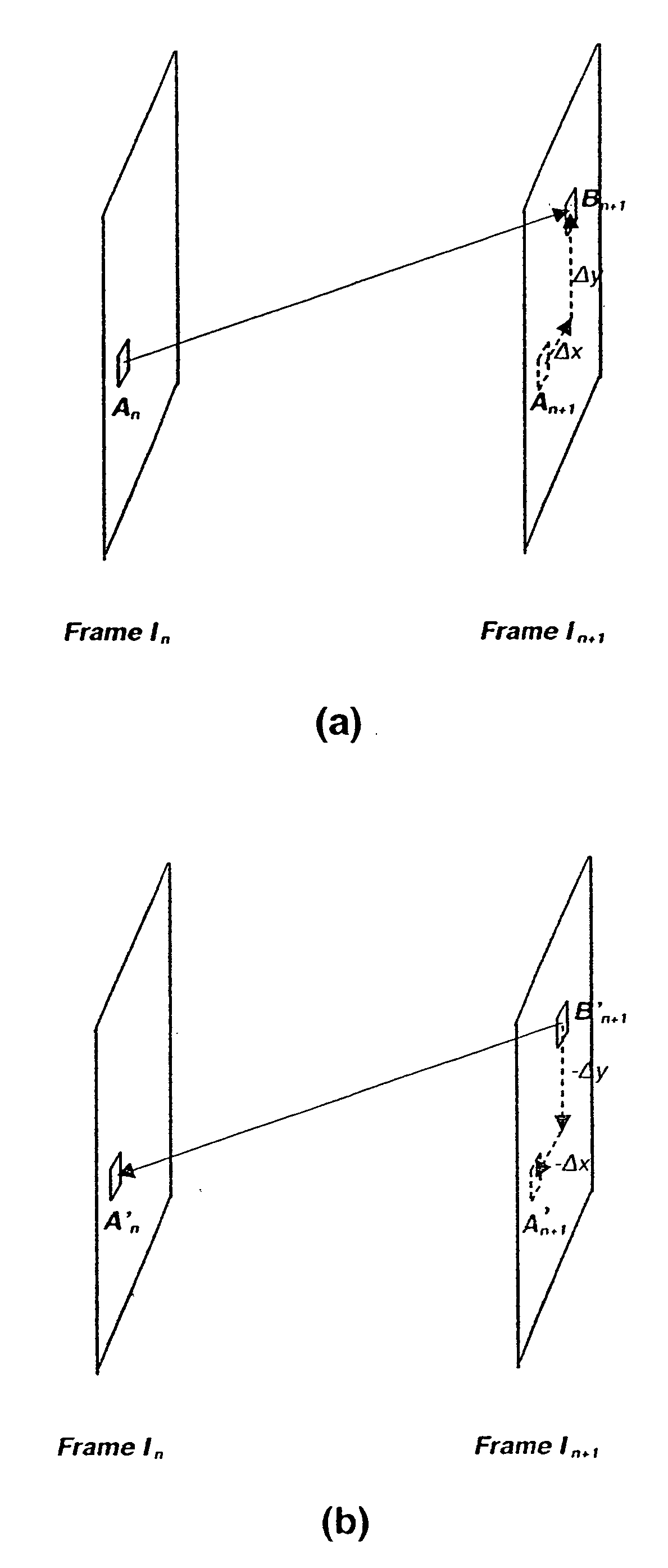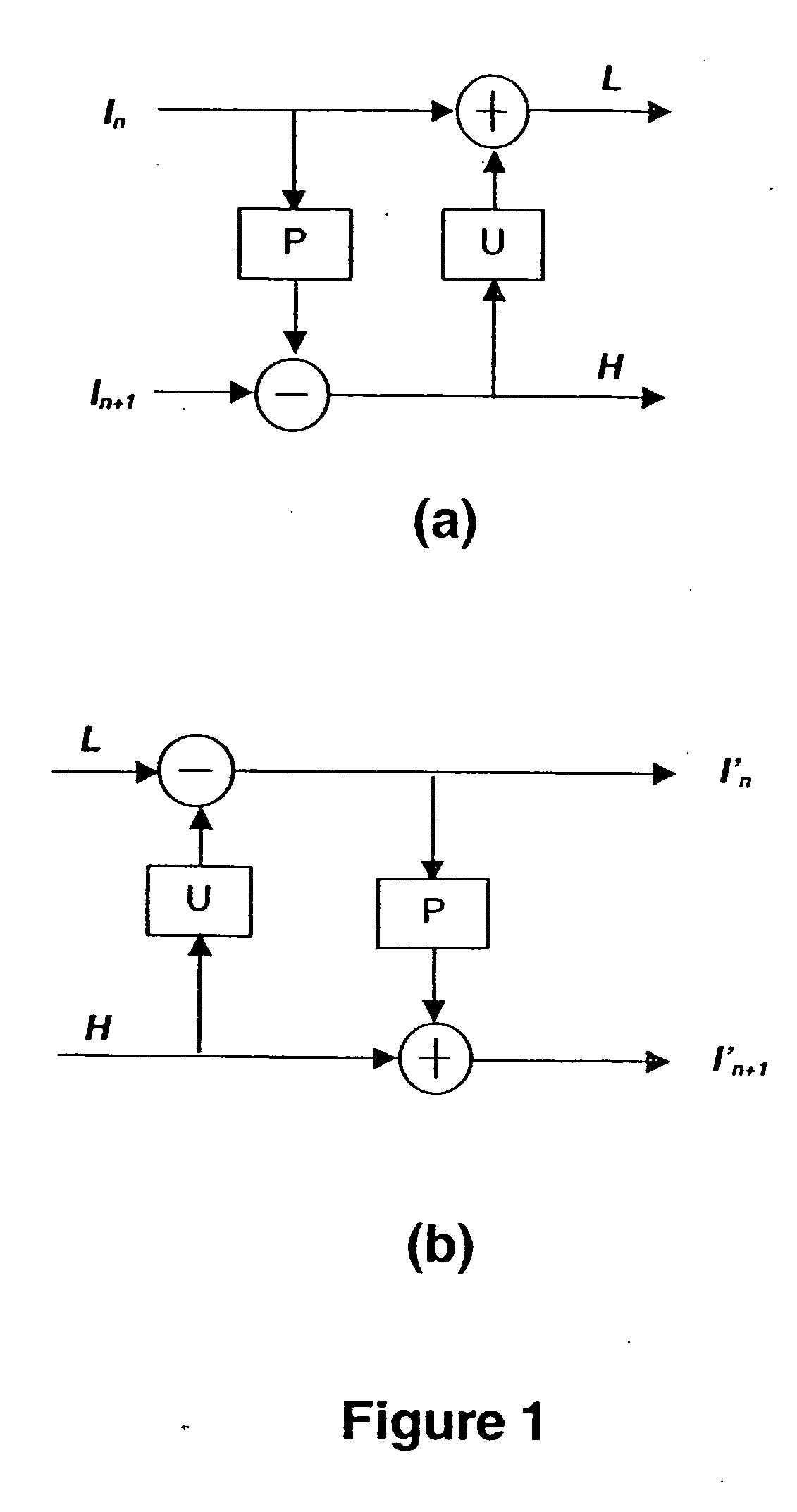Method and apparatus for update step in video coding using motion compensated temporal filtering
- Summary
- Abstract
- Description
- Claims
- Application Information
AI Technical Summary
Benefits of technology
Problems solved by technology
Method used
Image
Examples
Embodiment Construction
[0050] Both the decomposition and composition processes for motion compensated temporal filtering (MCTF) can use a lifting structure. The lifting consists of a prediction step and an update step.
[0051] In the update step, the prediction residue at block Bn+1 can be added to the reference block along the reverse direction of the motion vectors used in the prediction step. If the motion vector is (Δx, Δy) (see FIG. 4a), then its reverse direction can be expressed as (−Δx, −Δy) which may also be considered as a motion vector. As such, the update step also includes a motion compensation process. The prediction residue frame obtained from the prediction step can be considered as being used as a reference frame. The reverse directions of those motion vectors in the prediction step are used as motion vectors in the update step. With such reference frame and motion vectors, a compensated frame can be constructed. The compensated frame is then added to frame In in order to remove some of th...
PUM
 Login to View More
Login to View More Abstract
Description
Claims
Application Information
 Login to View More
Login to View More - R&D
- Intellectual Property
- Life Sciences
- Materials
- Tech Scout
- Unparalleled Data Quality
- Higher Quality Content
- 60% Fewer Hallucinations
Browse by: Latest US Patents, China's latest patents, Technical Efficacy Thesaurus, Application Domain, Technology Topic, Popular Technical Reports.
© 2025 PatSnap. All rights reserved.Legal|Privacy policy|Modern Slavery Act Transparency Statement|Sitemap|About US| Contact US: help@patsnap.com



